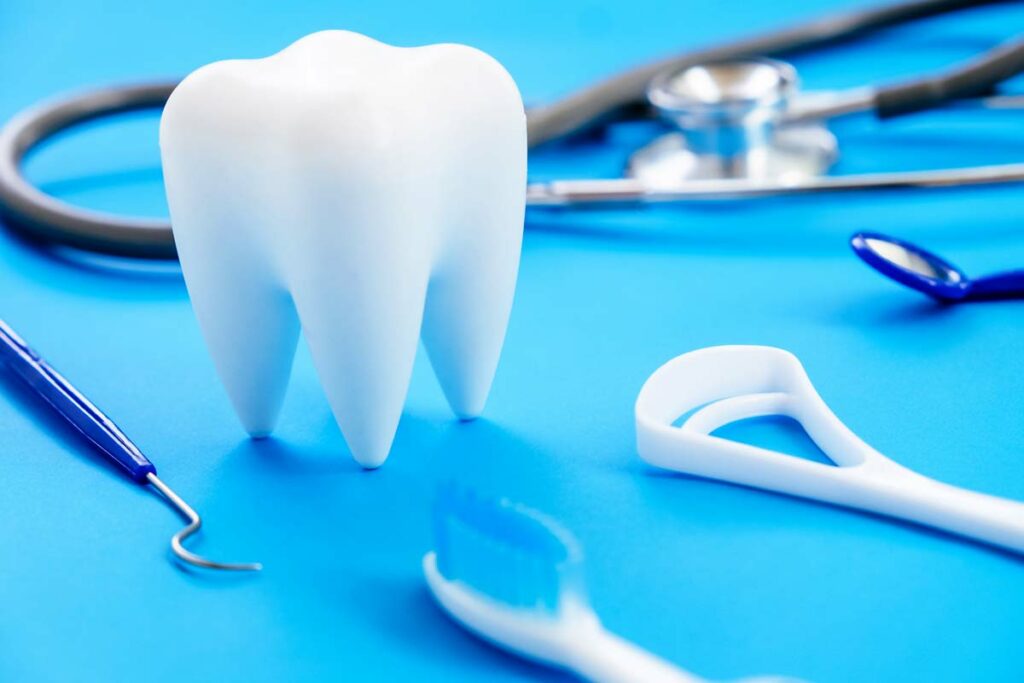When you go to the dentist, do you ever find yourself not understanding Latin terms but feel uncomfortable asking? Isn’t it explained to you during the procedure what exactly happens during the treatment? Amalgam or amalgam, how do you say it correctly?
This is what dentistry “one-to-one” wants to help you do, so you don’t feel lost during your treatments.
- Aphta: a small, whitish ulcerated patch on the mucous membrane.
- Amalgam: (and not “amalgam”) Alloy of mercury with other metals (e.g. silver), filler.
- Caries: also known as tooth decay, in which the tooth tissue is irreversibly damaged due to various causes (sugar consumption, bacteria, genetic factors, etc.).
- Endodontics: the discipline of root canal therapy and treatment of inflamed teeth.
- Tartar: A calcified form of plaque left on teeth due to improper dental care.
- Gangrene: means the death of a tooth.
- Gingivitis: inflammation of the gums, often accompanied by bleeding gums.
- Foci: dead or improperly rooted teeth, inflamed gums; they can cause inflammation in other areas of the body by allowing bacteria in the gums to spread to other areas of the body through the blood and cause disease in other organs. Common nodules, nodal diseases: tonsils, ovaries, testicles, joints, hair loss, etc.
- Implant: one of the most modern solutions for replacing missing teeth is tooth implantation. A dental implant is an artificial root made of bio-material that is implanted in the place of your lost tooth(s) to replace a carefully planned tooth replacement. In most cases, the material is tissue-friendly titanium, so the chance of allergies is minimal.
- Periapical lesion: apex tooth root apex, periapical, i.e. around the root apex of the tooth. In most cases it is related to inflammation of the tooth.
- Periostitis: a more serious condition in which the bacteria involved in the inflammation produce pus, which breaks through the periosteum and causes swelling of the soft tissues (the face).
- Pericoronitis: most often an inflammation that occurs during the growth of wisdom teeth. It can be accompanied by severe pain, swelling and purulent discharge. In more severe cases, it can lead to oral obstruction.
- Plaque: plaque on the surface of a tooth that has not been properly cleaned.
- Pulpitis: a disease of the tooth lining (pulp, nerve fibre), which occurs when the decay is so deep that it reaches the nerve fibre, infecting it. It can be severe, spontaneous or painful in response to different stimuli (cold, hot).
- Pocket: in gingivitis, periodontal disease, a pocket forms between the root of the tooth and the surrounding tissues. This pouch is filled with plaque and tartar, as well as inflammatory tissue.
Interventions:
- Depuration: tartar removal
- Extractio: tooth extraction, tooth extraction.
- Root canal treatment: the contents of the pulp are removed and, after disinfection of the root canals, a permanent root canal filling is inserted. The root canal treatment is carried out with the help of root canal needles.The root canal treatment procedure: first, the root canal is opened and the root canals are exposed. This is called trepanning. The dentist then uses tiny instruments to open up the canals and clean them. The procedures are performed under local anaesthesia, making them completely painless.
- Resection: an oral surgery procedure to remove the root tip of a tooth when the inflammation around the tooth root has not healed with a simple root canal.
If you have any questions or would like to have your teeth checked, please feel free to contact our dentists who will be happy to help you!

